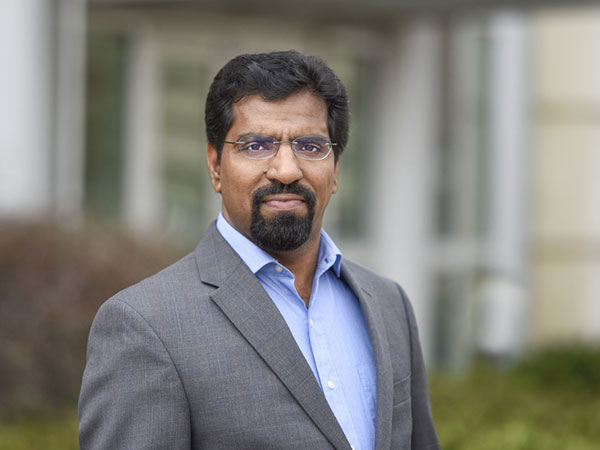Tissue engineering is a transformative branch of regenerative medicine —a cutting-edge field that has the potential to revolutionize the future of healthcare.
A team of researchers in the UAB Department of Materials Science and Engineering hopes to accelerate the pace of that high-tech research through the application of a decades-old process—one that has roots in centuries-old technology.
Vinoy Thomas, Ph.D., an assistant professor of materials science and engineering, says that a process known as “wet-lay process for nonwovens,” which formerly has been utilized by textile and paper industries, can be used to create scaffolds for tissue engineering. His team’s research, recently published in the Journal of Biomedical Materials Research, shows several advantages over other fibrous mesh-making technologies currently in use.
“Although this process is in its infancy with regard to tissue engineering,” Thomas says. “it shows promise in its ability to rapidly produce fibrous membranes of any type of fiber in a scalable and tunable fashion.”
Working in the UAB Center for Materials Processing and Applications Development (MPAD), Thomas’s team studied the process using short fiber systems such as polylactide fiber and soy protein fibers with natural gel, gelatin, and synthetic gel poly vinyl alcohol (PVA).
Currently, tissue engineers use other technologies, such as electrospinning and wet-spinning for nanofiber composites or additive manufacturing for microfibers, to create the extra-cellular matrix (ECM) scaffolding. The wet-lay system, in addition to being highly scalable, “allows fabrication of hybrid fiber systems, such as polymer-ceramic, polymer-metal wire, or multiple polymer systems or combinations,” Thomas says. “The process uses water and no other organic solvents, in situ hydrogel reinforcements, and cell-micro integration for cell-integrated scaffold constructs that are ready-for-implantation or culture.” Future aspects of this research could be cell-scaffold construct for cardiac and muscle tissue engineering applications.
Thomas was assisted in the study by former graduate students Andrew Wood, Ph.D. (currently scientist at Evonik Medical Device Competence Center, Birmingham, AL), and Dominique Everett, Ph.D. (currently lead scientist at GE Evendale, OH). The study was funded by a UAB Senate Faculty Development Grant (VT), the Alabama Space Grant Consortium (AW), and Alabama NSF EPSCoR (DE) programs.
The entire text of the article is available at the Journal of Biomedical Materials Research web site.
